This is old news, but the Morningside Hospital Blog was rated among the 50 best hospital blogs by healthcare blog, “Nurseblogger.” This happened last September but I wasn’t aware of it until I stumbled on it while doing Morningside research. I think we’re probably the only blog about a hospital that no longer exists among the top 50.
Some of the other “Top 50” hospital blogs included:
- “Beyond Vermont State Hospital (VSH) Blog” in Vermont
- “Porter Adventist Hospital” in Colorado
- “Save Charity Hospital” in New Orleans, Louisiana
- “Knoxville Hospital and Clinics Blog” in Iowa
- “Lexington Medical Center” in South Carolina
- “OSF St. Joseph Medical Center: This is Health Care” in Bloomington, Illinois
- “Sutter Medical Center Castro Valley” in California
- “Virginia Hospital Center” in Arlington, Virginia
- “Children’s Hospital and Health System” in Milwaukee, Wisconsin
By Ellen | March 31, 2010

Gold was discovered in Nome in 1898. The city was incorporated in 1901 and grew to an estimated 20,000 over the next 10 years, making it the most populous city in the Alaska Territory. Only a few of the thousands of miners who came to Nome to seek their fortunes succeeded. Today Nome has fewer than 4,000 residents and serves as the regional service center for the Seward Peninsula.
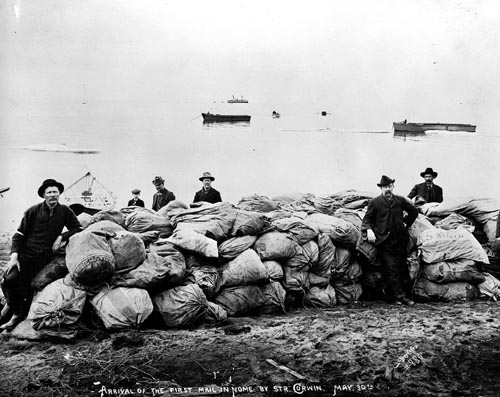
Niesje Steinkruger was in Nome earlier this month and dug deeper into the court records. There are six probate docket books there and she went through them all. Meg Greene went through two of the docket books on an earlier trip to Nome. Niesje copied the names, court case numbers and the dates each case began. Many of the defendants went to Morningside, some had their charges dismissed, and some were found not guilty. In Nome they were charged with being “insane and at large”. She found 182 cases between 1901 and statehood.
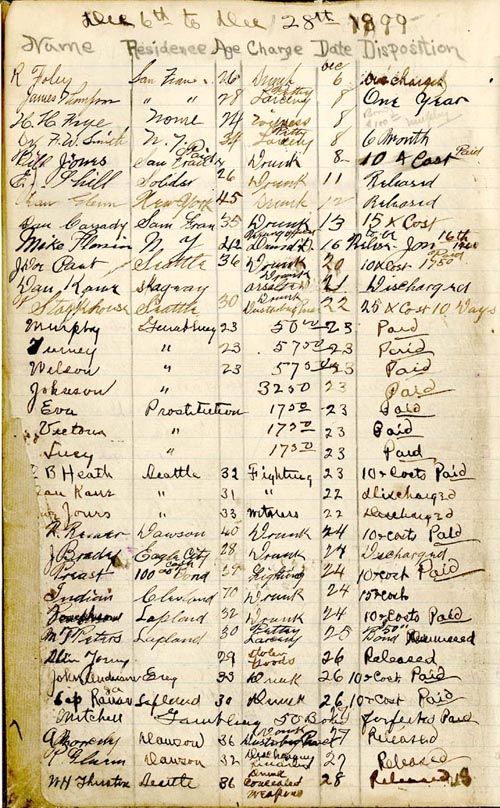
Nome Docket Page 1899
The earliest records had Guardianships and Insane in the title. The earliest record was from June 22, 1901, and the defendent was committed to the State Asylum at Steilacoom, Washington. Between 1901 and 1923 the court documents appear to have been recorded, like deeds.While in Nome, Niesje recruited a volunteer, Debbie Redburn, who offered to copy pages Niesje marked in the docket books. Niesje noted that this is a big job. The books are approximately 24 inches by 14 inches, so Debbie will have to manhandle them, and somehow reduce the size of the pages to make copies.
The images on this page are from the Photo Archives of the Alaska State Library.
By Ellen | February 19, 2010
Many of the recently discovered burial sites and death certificates were from the early years at Morningside Hospital. In May, I wrote an article about the Department of the Interior’s 1915 investigation into the care provided at the hospital. In March of 1915, the judicial committee of the Alaska Territorial Legislature issued a report criticizing the facility and demanding that care be improved. Dr. Viola May Coe of Morningside Hospital denied the accusations and asserted that patients were well cared for. Read More »
By Ellen | February 16, 2010
by Sally Mead
Over the past two weeks in Portland we’ve unearthed quite a bit more backdrop on the search for the burial locations of Morningisde patients. Working closely with Robin Renfroe and her sister Peggy, from Salem, we visited the State of Oregon Archives to search for death certificates for over 150 people. Robin had done research on the Wickersham Paper, US Census reports and Morningside Admittance lists to unearth as many Alaska Native people (or known family names) as possible.
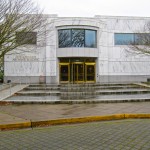
OR Archives, Salem
We have now searched all 121 names on the Wickersham list (pre 1916) as well as around 50 more Alaska Native people reported from 1920 to 1957. It is not complete but an important start. Not all of them had a death certificate, but most did. The certificates are telling, from full names, to cause of death, burial location and family members if known. Those lines were almost always empty…. It was very sad to see how many were listed with epilepsy as cause of death.
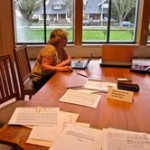
Robin
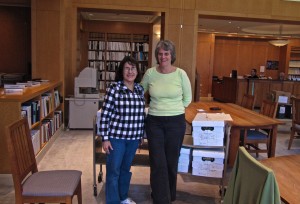
Peggy and Sally
By Ellen | February 13, 2010
A lot of good things happened over the past few weeks. I’ll post an article with more information later this weekend but wanted to get just a bit of the exciting news online now. Good friends and volunteers Robin Renfroe (Fairbanks) and Sally Mead (Anchorage) were in Portland this week looking for Morningside patient death certificates and burial sites. Prior to their visit, we’d found a few death certificates and had not located any graves. Robin and Sally found both! Here are a few of the headstones they found at Multnomah Park Cemetery.
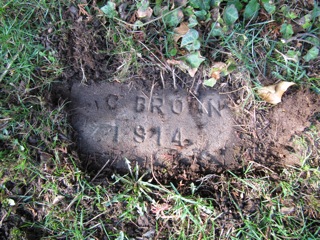
Charles Brown (Juneau) Died 1914
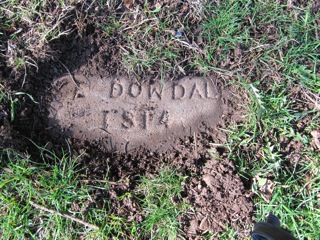
Edward Dowdall (Sitka) Died 1914
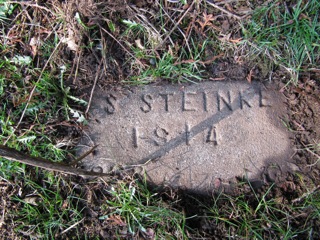
Sam Steinko (Ft. Gibbon) Died 1914
By Ellen | January 5, 2010
We’ve dragged two new volunteers into our pursuit of the history of Morningside Hospital. Niesje Steinkruger and Meg Green, retired Superior Court Judges from the Alaska Fourth Judicial District, are taking the lead in researching the Federal and State court commitment records.
Meg recently returned from a trip to Nome, where she spent a few hours at the Nome Courthouse:
“I was in Nome doing some work the first three days of this week and had a couple of hours at the end. I found the federal Probate Docket book from the Cape Nome Precinct at the Nome courthouse. I had earlier been told that Nome did not have them. There are 5 volumes running from 1918 to statehood. There may be an earlier volume, but I could not find it (what I saw starts with volume “2.”)
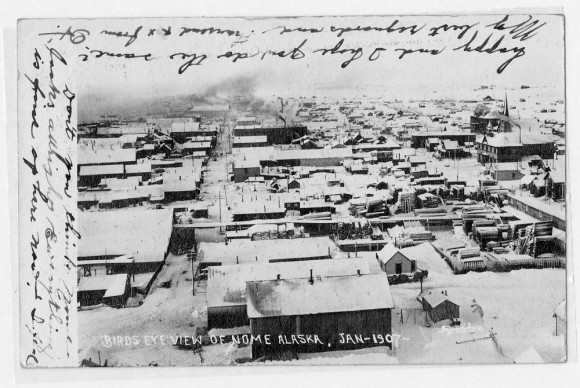
Central Washington University, James E. Brooks Library, Digital Archives
Read More »
By Ellen | December 15, 2009
Among the few pictures of Morningside are a two taken at Christmas celebrations in the 1920s. The US Department of the Interior records included correspondence from Wayne Coe about the 1922 Morningside Hospital Christmas party and an accounting of the party and patient gift expenses.
These two photos, which are from the Oregon Historical Society, were not dated but appear to be from the 1920s.
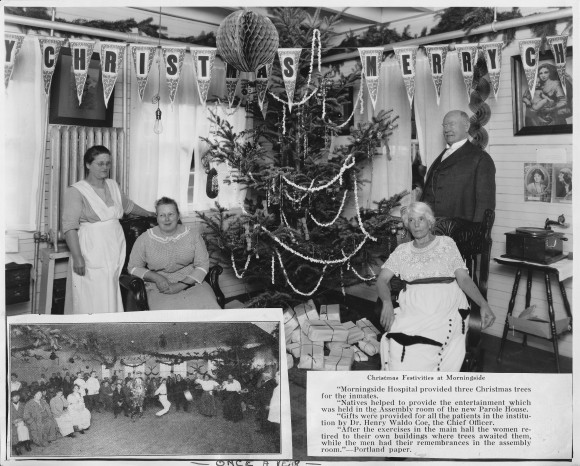
The caption on the photo above is an account of the Christmas Festivities at Morningside from a Portland newspaper. “Morningside Hospital provided three Christmas trees for the inmates. Natives helped to provide the entertainment which was held in the Assembly room of the new Parole House. Gifts were provided for all the patients in the institution by Dr. Coe, the Chief Officer. After the exercises in the main hall the women retired to their own buildings where trees awaited them, while the men had their remembrances in the assembly room.”
The founder of Morningside Hospital, Dr. Henry Waldo Coe, is standing to the right of the Christmas tree.
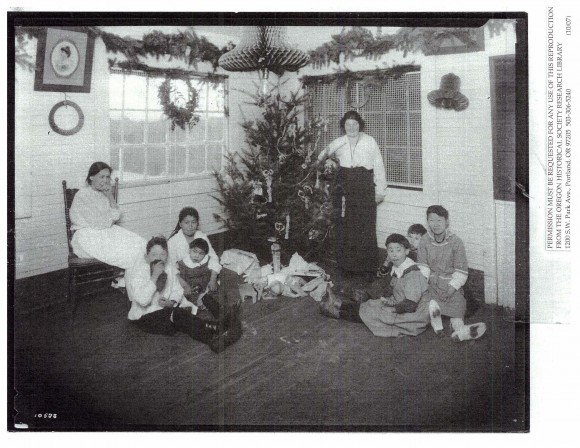 The photo above appears to be from the early to mid-1920s. Children were first admitted to Morningside at the end of 1922 or early 1923. Read More »
The photo above appears to be from the early to mid-1920s. Children were first admitted to Morningside at the end of 1922 or early 1923. Read More »
By Ellen | November 2, 2009
A while ago, Robin Renfroe sent us James Ebana’s story, which was posted in May on this blog. James had epilepsy and was sent to Morningside Hospital when he was 17 years old. He died there on March 21, 1942 when he was 27. She thought he was buried at the Multnomah Park Pioneer Cemetery, but had no way to confirm it or locate James’s grave.
Last weekend, she emailed with good news:
“I will be heading to Portland on Nov 20. I hope I have found James Ebana’s grave. I have talked to the cemetery staff and found their website that has a map and searchable database. So I have found the location of the grave. I have asked their staff to pull any records related to this and to call me. Will see what happens.
Here is the website for 14 Oregon Pioneer Cemeteries and where I found the location of James Ebana (Ebeno) at Multnomah Pioneer Cemetery. You may be able to search here for names. May also need to use alternative spellings.”
Good luck, Robin! And thanks for the valuable research tool.
By Ellen | October 5, 2009
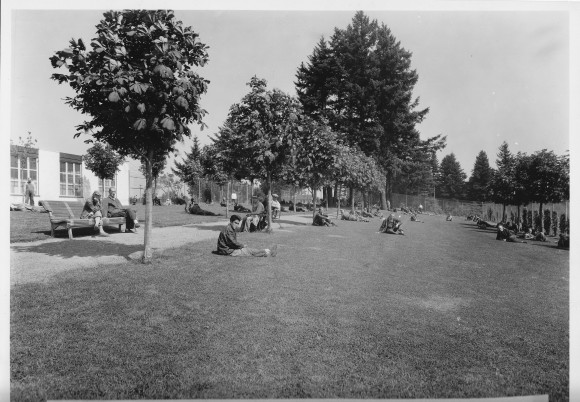
Record Group 126, Records of the Office of the Territories, National Archives II, College Park, MD
Occasionally there are glimpses of who was at Morningside. Included in the Department of the Interior files from the National Archives was a tabulation of admissions between 1912 and 1942. There was a total of 1,601 admissions over the 30 years, an average of 53 admissions per year. The percentage of admissions who were female increased from 10.1% during the first 5 years (1912-1917) to 26.4% for the years 1938 to 1942. The report noted:
“Out of the 81 females now in the hospital, there are 13 who have been in the hospital more than 15 years. There are 20 of them who are epileptics or mentally deficient and there are 20 who are over the age of sixty at the time. The epileptics, mentally deficient and older women, that is 40 out of the 81 require more or less special attention and many are infirmary cases.”
By Ellen | September 10, 2009
By Karen Perdue
The family lore about my uncle said he was taken from a small village on the Yukon River in his childhood because he was acting funny. Actually, my aunt Minnie told me he was hit over the head with a frying pan and was never the same again. Where did he go, I always wondered?
As I have gotten older, I have begun to appreciate the value of history. After spending many enjoyable years involved with projects that celebrated the history of Statehood in Alaska, I volunteered to lead a project on gathering the oral histories and documents that pertained to Alaska’s developing mental health services.
The journey of discovery has been fascinating, but I wasn’t prepared for the deep and powerful impact the project would have on me. I didn’t anticipate we would learn about the people.
Our first discovery was a hand-written list of names of patients at Morningside from the 1920 U.S. Census and, shortly after that, a list of patients prepared for Delegate James Wickersham who, as far as I can see, was a tireless mental health advocate throughout his career.
Then the 1955 list. I began to recognize family names. One day at a meeting, while on break, I called a friend over to my laptop and pulled up the list, pointed my finger at a name and said “this guy has your last name—ever hear of him?” What was I thinking! The reaction of my colleague was immediate and profound. “That is my brother—and we have been looking for him for decades, said my friend tears streaming down his face. Later, recovered and thoughtful, my friend asked two questions- when did he die and where is he buried? He and his wife plan to make a trip to Portland to the cemetery where he might find his little brother’s grave. Read More »











